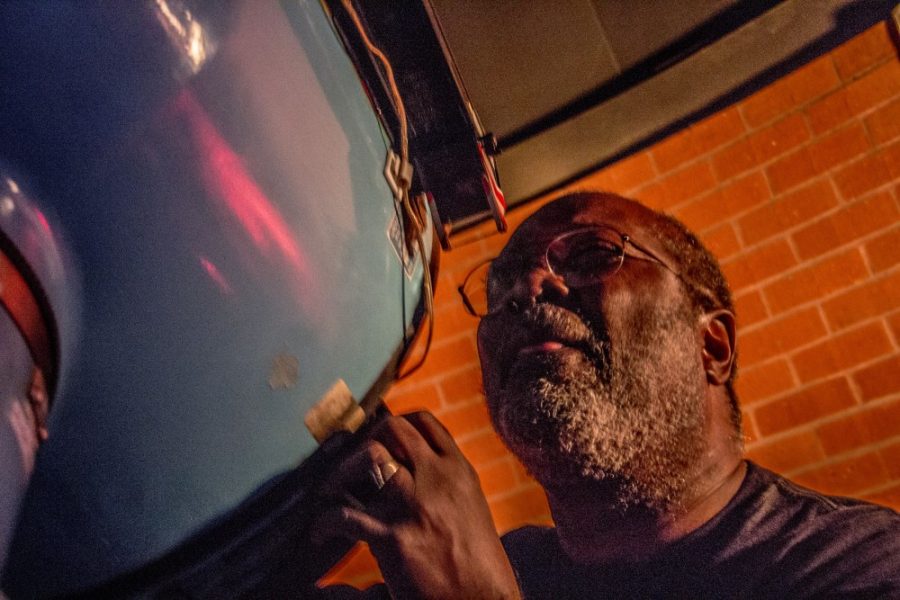Instead of catching up on yet another sitcom this weekend, consider relaxing with the mysteries of the universe at Flandrau Science Center.
The center has been displaying science exhibits, putting on laser shows and giving the public access to a telescope since 1972.
“It’s a chance to see some really unique and interesting exhibits that they won’t see anywhere else, and it’s right here on campus,” said Bill Plant, director of the center. “Flandrau is a hidden gem on campus. You can spend hours looking at the specimens in the mineral exhibit, learn something new about this unique region that we live in, in the sky islands exhibit … you can learn a little bit of everything.”
If your brain still hurts from your coursework, don’t worry — there’s more to do.
“You can come in to relax, sit under the stars in the planetarium dome,” said Plant. “Walk around, see things. Go outside, look through the telescope.”
Flandrau holds laser shows Thursday through Sunday, which include a family-friendly show, Pink Floyd’s Dark Side of the Moon and a monthly matinee show. This month, Flandrau is doing a ‘90s show.
“It’s Pink, Nirvana, stuff like that,” Plant said. “Some of the [imagery] is really abstract and cool patterns, some of it is more tongue-in-cheek cartoon stuff that relates to the different songs.”
Plant also encouraged the public to offer suggestions for new shows on the Flandrau Facebook page.
Flandrau features several exhibits at a time. Right now it is holding an exhibit called OSIRIS-REx: Great Balls of Fire, which explores the science behind the UA-led asteroid mission, and another exploring the sky islands of Arizona.
“It talks about the mountains and these unique sky islands we have that allow for this amazing diversity of life, different climates, different elevations,” Plant said.
In celebration of Arizona’s centennial, the center is also displaying a mineral exhibit about Arizona’s rich mining history.
Even with all that going on, there’s still another mineral exhibit and the public telescope.
“The most common thing you hear is ‘Wow!’ and the second thing you hear is, ‘Is that real?’” said Tim Van Devender, a volunteer astronomy coordinator. Devender helps maintain and control the telescope. “Many people have never looked through a telescope, so being able to see the rings of Saturn or the bands on Jupiter for the first time is an impressive experience,” he said.
According to Devender, some of the celestial bodies a viewer might see through the telescope include binary stars, the moon, other planets and “deep sky objects.”
“I think it’s really spectacular for people who aren’t accustomed to astronomy,” said Rich Watson, another volunteer coordinator. “[Tucson] is the astronomy capital of the world, basically. We have so much happening right here, in this spot. It is astounding. There are literally thousands of astronomers working in Tucson.”
Even if you’re not an astronomer, you can still help out at Flandrau. Watson recommended that students fill out a volunteer application online, or to stop by the front desk to find out more.
Plant also said the center could use a stronger student turnout.
“We don’t have as many college students as we’d like to see come through Flandrau,” he said. “A lot of folks in the campus community don’t know what we have to offer at Flandrau, or don’t even know what the building is.”
It’s time to find out for yourself. This weekend, go hear some music, see the stars and learn about the workings of the universe at Flandrau Science Center.
Follow us on Twitter @wildcatarts and follow Greg @Philoboarder43.









